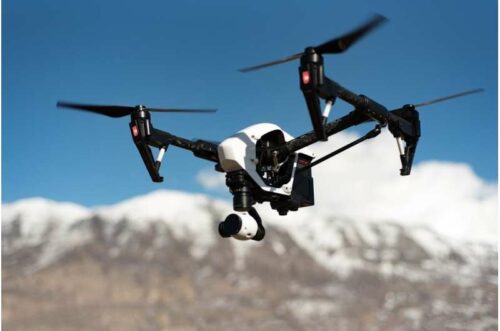Discover how simulated systems, algorithms, and ‘noisy sensors’ could be the answer to autonomous aerial challenges.

The imminent boom in autonomous drone aircraft activity within the uncontrolled airspace under 400 feet is gearing up for significant traffic augmentation. Projections highlight that by 2027, the U.S. could see approximately 1 million commercial uncrewed aircraft systems (UAS) taking to the skies. These drones will be utilized for diverse operations, including package delivery, traffic analysis, and emergency response.
In response to this anticipated rise in drone traffic, a research team, at the Institute for Assured Autonomy’s Lanier Watkins and Louis Whitcomb, turned to artificial intelligence. Their mission is to devise a system that would seamlessly orchestrate drone traffic, integrating autonomous decision-making, and reducing human interference. Highlighting the vision behind the research, Watkins stated, “Our goal was to validate the capability of AI in safely managing large-scale drone operations.” The outcome? An innovative simulated system founded on autonomy algorithms, tailored to bolster the safety and scalability of UAS operations beneath the 400 feet mark.
The study involved simulating a 3D airspace and probing the efficiency of autonomous algorithms. The research built upon prior knowledge that collision avoidance algorithms significantly curtail accidents. By integrating strategic deconfliction algorithms, which optimize traffic flow, the system almost eradicated airspace mishaps. The team added layers of realism to the simulation. Incorporating “noisy sensors” simulated real-world unpredictability, enhancing system adaptability. Meanwhile, a “fuzzy interference system” was deployed to gauge risk factors for drones based on various criteria. Such facets equipped the system to autonomously avert collisions. The researchers have evaluated diverse scenarios, even those with ‘rogue drones’ and the findings are optimistic.
The next research phase aims to infuse more real-world variables, like weather challenges, into the simulations. As Watkins underscored, the study draws upon over twenty years of dedicated research at the Johns Hopkins University Applied Physics Laboratory, aiming to augment the safety quotient of the U.S.’s National Airspace System. The research provides valuable insights into how autonomy algorithms can navigate 3D-simulated airspace amidst uncertainties. The study accentuates the importance of ongoing monitoring of these algorithms to guarantee their unerring performance.







